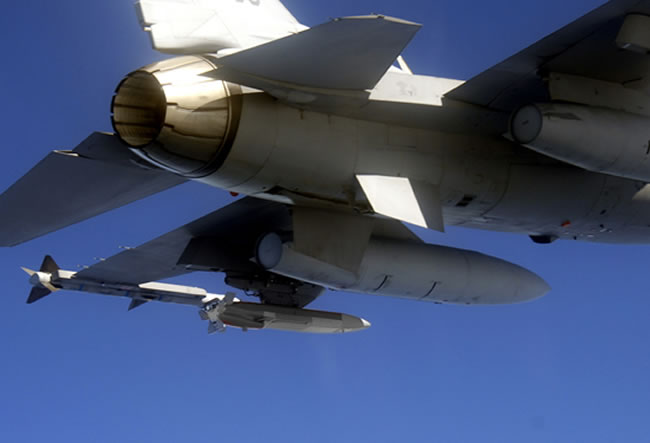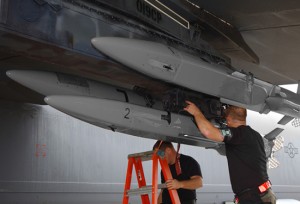
Raytheon and General Atomics Aeronautical Systems (GA-ASI) are working together to equip GA-ASI’s Predator B/MQ-9 Reaper Remotely Piloted Aircraft (RPA) with Raytheon’s ADM-160A Miniature Air Launched Decoy (MALD), developing unmanned, autonomous launch platform for electronic warfare decoys employed in Suppression of Enemy Air Defense (SEAD) missions.
The team has completed ground verification test phase in November 2012, loading MALDs on Reapers at GA-ASI’s Gray Butte Flight Operations Facility in Palmdale, Calif., The integration of MALD on the aircraft is estimated to conclude in 2013.
“This new offering provides unprecedented electronic warfare capability enabling remote, unmanned suppression of enemy air defenses,” said Harry Schulte, vice president of Air Warfare Systems for Raytheon Missile Systems. “Integrating MALD weaponry on remotely piloted aircraft systems is integral to maintaining air superiority in today’s and tomorrow’s conflicts.”
When employed, MALD confuses the target integrated air defense system (IADS), and then kinetic weaponry is selectively employed to permanently disable IADS nodes, dramatically increasing electronic attack persistence in the battlespace.
 MALD weighs less than 300 pounds and has a range of approximately 500 nautical miles. Various types of MALD are in service, including the passive decoy, programmed to mimic the signature of various aircraft and jammer-equipped decoys (MALD-J), loaded with jammers to carry out stand-in jamming of enemy radars. This version was first delivered to the US Air Force in September 2012; operational testing of this decoy are currently underway.
MALD weighs less than 300 pounds and has a range of approximately 500 nautical miles. Various types of MALD are in service, including the passive decoy, programmed to mimic the signature of various aircraft and jammer-equipped decoys (MALD-J), loaded with jammers to carry out stand-in jamming of enemy radars. This version was first delivered to the US Air Force in September 2012; operational testing of this decoy are currently underway.
It is currently deployed with manned aircraft, primarily B-52, and F-16. Integration of MALD with the US Navy F/A-18E/F Super Hornet is currently underway. In 2011 Raytheon also demonstrated how MALDs can be deployed from the C-130, using the MALD Cargo Aircraft Launch System (MCALS).
















